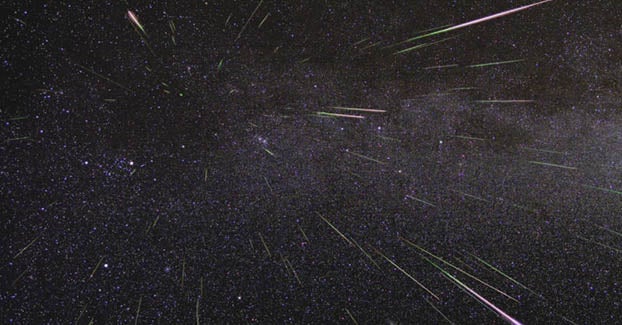Look at the Sky: Geminids meteor shower peaks in Charlotte Co.
Published 8:47 am Friday, December 15, 2023

- (Photo courtesy of NASA) A look at some of the geminid meteors filmed during their 2022 shower.
|
Getting your Trinity Audio player ready...
|
At any point this weekend once it gets dark, you can step outside in Charlotte County and see a light show, as the Geminids meteor shower continues.
And no, to be clear, this isn’t some alien invasion. We’re referring to the annual Geminid meteor shower, which started at the end of November and will run through most of December. At the beginning, things were just warming up, with people able to see 10 to 20 meteors in an hour, according to National Aeronautics and Space Administration (NASA) officials. And each week, it got a little bigger and a little bigger, until this weekend. We’re at the peak of the meteor shower, with 120 falling per hour.
Where do they come from?
So what is a meteor shower? According to NASA officials, these showers happen when Earth passes through debris trails left by comets.
That debris then collides with our atmosphere and disintegrates, creating these fiery and often colorful streaks in the sky.
Now we say all that to then immediately pull the rug out. You see, NASA officials don’t believe these meteors were created that way. Instead, Scientists think that pieces of an asteroid, known as 3200 Phaethon, broke off in the mid-1800s after thousands of years of space travel. As a result, billions of tons of debris pieces went flying into the solar system. The remains of that asteroid, roughly 3 miles in diameter, still orbit the sun today, taking 1 and a half years to make it around. And each time it passes our way, more debris breaks off and becomes the meteors we sit outside and watch fly through the sky.
Because this asteroid flies so close to the sun on its route, scientists named it Phaethon. In Greek myth, Phaethon was the son of the sun god Helios. One day, Phaethon stole his father’s chariot and horses, which help the son make its journey each day. But he couldn’t control the chariot or the horses, burning the Earth in parts and freezing it in parts. He was then struck down by Zeus.
So now you know where the asteroid got its name. And because this asteroid is believed to have originated in the constellation Gemini, that’s where the meteors get theirs.
Can I see the Geminids meteor shower?
So now for the big question. How can you watch the showers each night? NASA officials say the best time to view them is between 9 or 10 p.m., but they will keep going from around 8:30 p.m. until the predawn hours.
To view the Geminids:
Find an area not polluted by city lights or street lamps;
Prepare for winter temperatures with blankets, warm clothes and a lawn chair;
Face south and look up at the sky. It takes about 30 minutes in the dark for our eyes to adapt to the night skies and see the meteors.
While it is now one of the year’s strongest meteor showers, the Geminids didn’t start out that way, according to NASA. When the shower first began appearing in the mid- 1800s, only 10 to 20 meteors could be seen per hour.
Since that time, the Geminids have grown into a major meteor shower that peaks with 120 Geminid meteors visible per hour under perfect conditions.
And don’t think this is the end. If you miss the meteors this weekend, there will be another round at the end of next week, as the Ursid shower rains down on the night of December 21 through the early morning hours of December 22.





